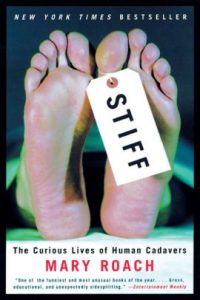00:43 | Right and Left, Oh My!
04:22 | Sponsored by HAPS
06:11 | Semi-Identical Twins
12:33 | Sponsored by AAA
12:52 | Sorting Student Papers
17:50 | Stickers? Really?
24:24 | Sponsored by HAPI Online Graduate Program
24:59 | Featured: How Students Address Us
42:43 | Hearing from YOU
If you cannot see or activate the audio player click here.
Questions & Feedback: 1-833-LION-DEN (1-833-546-6336)
Follow The A&P Professor on Twitter, Facebook, Blogger, Nuzzel, Tumblr, or Instagram!
For once, maybe someone will call me "Sir," without adding "...you're making a scene."(Homer Simpson)
1 | Right and Left, Oh My!
3.5 minutesIn Episode 43 (the previous full episode), I mistakenly swapped my "left" and "right" when describing situs inversus in a body donor from the 1800s. Oops. I corrected it later in the audio file, but the corrected audio may not play in all platforms.
This mistake does bring up how easy it is to get even the simple stuff wrong without realizing that's what's coming out of our mouth! Yikes.

2 | Sponsored by HAPS
2 minutesThe Human Anatomy & Physiology Society (HAPS) is a sponsor of this podcast. You can help appreciate their support by clicking the link below and checking out the many resources and benefits found there. AND mention your appreciation to the HAPS leadership while you are at the conference—or anytime that you communicate with them.
Check out Kevin's workshop on Running Concept Lists!
3 | Semi-Identical Twins
6.5 minutesSemi-identical twinning, where two sperm and one egg unite to form two offspring, both sharing 100% identical maternal genome but not sharing an identical paternal genome. Also called sesquizygotic twinning (a term not used in the podcast), there's more to it than Kevin could discuss here, so check out the resources:
- Semi-identical twins 'identified for only the second time' (plain English summary) my-ap.us/2WLupnS
- Molecular Support for Heterogonesis Resulting in Sesquizygotic Twinning (full article from New England Journal of Medicine; includes diagrams and video) my-ap.us/2WPsBdt
- Sesquizygous Twinning (NEJM animated video summary) my-ap.us/2WMVoPX
4 | Sponsored by AAA
0.5 minuteThe searchable transcript for this episode, as well as the captioned audiogram of this episode, are sponsored by The American Association of Anatomists (AAA) at anatomy.org. Their big meeting is in April at the Experimental Biology (EB) meeting in Orlando FL. Check it out!

5 | Sorting Student Papers
5 minutesA simple, inexpensive accordion file folder can make recording of grades (exams, reports, assignments) easier, quicker, and more accurate.
- Here are some sources (Amazon referrals help defray podcast expenses)
- Smead Expanding File, 21 Pockets, Alphabetic (pictured) amzn.to/2EcWnBC
- Letter Size Accordian Folder, Plastic File Box Filling Box with Expandable Cover amzn.to/2Vqho1GSamsill
- Accordion Folder/Letter Size 2-Pack amzn.to/2YxrpvW
- Check out this previous episode to learn why you should grade with a green pen

6| Stickers? Really?
6.5 minutes Yeah, kindergarten teachers put stickers on student papers to motivate them. But this minimalist form of "gamification" can help motivate college and university students, too. Try it! It's cheap and easy. If it doesn't motivate your students, at least it will make your course's culture a bit more fun and positive, right?
Yeah, kindergarten teachers put stickers on student papers to motivate them. But this minimalist form of "gamification" can help motivate college and university students, too. Try it! It's cheap and easy. If it doesn't motivate your students, at least it will make your course's culture a bit more fun and positive, right?- Looking for stickers? (Amazon referrals help defray podcast expenses)
- Stickers for teachers amzn.to/2HnqecE
- Anatomy stickers amzn.to/2Efwnpz
- Episode related to feedback to students:
- EVEN MORE Tricks for Retention & Success in Online Courses | Episode 23
- Remember that green pen I just mentioned?
7| Sponsored by HAPI Online Graduate Program
0.5 minuteThe Master of Science in Human Anatomy & Physiology Instruction—the MS-HAPI—is graduate program for A&P teachers. A combination of science courses (enough to qualify you to teach at the college level) and courses in instructional practice, this program helps you power up your teaching. Kevin Patton is a faculty member in this program. Check it out!
There will be a HAPI table in the Exhibit Hall at the 2019 HAPS Annual Conference. Stop by and say hi!

8 | How Our Students Address Us
17.5 minutesA conversation with Mike Pascoe got me to thinking about different preferences we have for how we want our students to address us. Professor? Mr. or Ms.? Doctor? or just Kevin. As long as they don't call me late for dinner, eh?
There's more to this question than meats the eye (and ear)!
- Some different takes on this:
- Do You Make Them Call You ‘Professor’? | Why I began to rethink my views on classroom decorum (opinion article) my-ap.us/2WQFYue
- Doctor, Professor or 'Hey, You'? (opinon article)my-ap.us/2WMBFQD
- Weigh in now (while it's still up) on Twitter: What do you prefer that your students call you?
- Go to twitter.com/theAPprofessor and join the poll!

If the hyperlinks here are not active, go to TAPPradio.org to find the episode page.
- More details at the episode page.
- Transcript available at the script page.
- Listen to any episode on your Alexa device.
- Need help accessing resources locked behind a paywall? Check out this advice from Episode 32 to get what you need! https://youtu.be/JU_l76JGwVw?t=440
Sponsors
Transcript and captions for this episode
are supported by the
also provides marketing support for this podcast.
Distribution of this episode is supported by
NYCC's online graduate program in
Clicking on sponsor links
helps let them know you appreciate
their support of this podcast!
Referrals also help defray podcasting expenses.
Click here to listen to this episode—or access the detailed notes and transcript.










